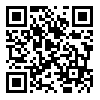BibTeX | RIS | EndNote | Medlars | ProCite | Reference Manager | RefWorks
Send citation to:
URL: http://ncmbjpiau.ir/article-1-5-en.html

 , Maryam Tajabadi ebrahimi
, Maryam Tajabadi ebrahimi 
 , Shokofeh Dehghan Bonadaki
, Shokofeh Dehghan Bonadaki 
 , Mansoreh Torabi kajousangi
, Mansoreh Torabi kajousangi 
 , Farimah Zahedi
, Farimah Zahedi 

Aim and Background. Probiotics are microorganisms in the gastrointestinal tract that besides helping the digestion of complex molecules, also helped the immune system and will reduce inflammation. The beneficial effects of these bacteria on ulcer healing has been proved but little research has been don done in the field of healing effects of these bacteria on cotaneous wound healing. Therefore, the purpose of this experiment is study the effect of lactobacillus plantarum isolated from Iranian traditional dairy products on cutaneous wound healing.
Materials and Methods. After isolated 22 strains of lactobacillus from Iranian traditional-dairy products and measuring exopolysaccharide production in stains by phenol-sulfuric acid method eventually, Lactobacillus plantarum selected because it has a high exopolysaccharide (EPS) production. Wistar male rats divided into 3 groups experimental, control and negative control (n=5) and a full-thickness wound (1.5 × 1.5 cm) was made on the back of each rat (45 rats in 3 groups). After 24 hours of injury, Two groups, control and experimental, were treated by eucerin and eucerin contained lactobacillus plantarum, respectively, but the negative-control group did not receive anything. On days 1, 3 and 14 rats were killed and wound samples were collected for histological and statistical studies.
Results . Lactobacillus plantarum significantly decreased wound area compared to control and negative control groups and increased wound healing. Histological study on day 3 showed significant increase in number of neutrophils and significant increases in macrophages and fibroblasts (p<0.001). Also significant reduction in neutrophils, macrophages and fibroblasts numbers observed on day 14 (p<0.001).
Conclusions : The current study presented a significant decrease in inflammation and an acceleration of wound healing in Lactobacillus plantarum treated rats as compared to the control and negative control groups. Further studies are required to develop a detailed mechanism of Lactobacillus plantarum during cutaneous wound healing.
Received: 2011/01/31 | Published: 2011/01/15
| Rights and permissions | |
 |
This work is licensed under a Creative Commons Attribution-NonCommercial 4.0 International License. |



